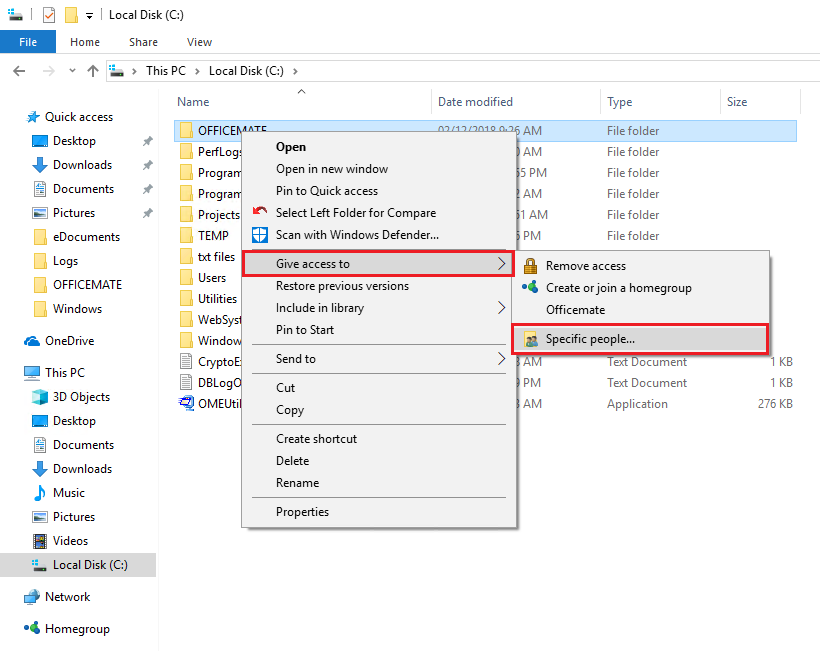
On the file/folder Properties page, uncheck the hidden option and click on the ‘Ok’ button. Now right click on the hidden file you want to unhide and select Properties. The Active Directory folder displays Active Directory objects in a browse window. This will show all hidden files and folders. Hides the Active Directory folder in Network Locations. On the Show menu, select the Hidden items option.

How do I stop sharing files or folders Right-click or press a file or folder, then select Show more options > Give access to > Remove access. Open File Explorer and click on the View > Show. Enable Access-Based Enumeration Server Manager -> File and Storage Service -> Shares -> Right mouse in the SharedDocs -> Click Properties Go to Settings -> Tick in Enable access-based enumeration -> Click OK At the client side User A, you should sign-out to take effect then verify again, you should only see the Accounting folder. DS_Stores in a fixed location, and not in the folder itself. It works for folders, tooshare a folder, and all files in it will be shared. DS_Store files, this can effectively be done with Asepsis. The bounty is rewarded for dot_clean, this native command line app cleans all. I want them not to be created in the first place.Įdit: I prefer a 'native' OS X solution over third party apps.Įdit: This questions has two answers, one for the. type f -name "._*" -exec rm "" \ Įdit: I don't want to delete the files or exclude them from copying. But this does not work in Mavericks: defaults write DSDontWriteNetworkStores -bool trueįor now I use this oneliner, but doing a rm -rf does feel wrong in this case. On (and other internet sources) you can find a 'defaults write' to disable the creation of. How can I prevent OS X from making these strange invisible files?
HIDE FOLDERS NETWORK SHARE WINDOWS
dot items are invisible, but my windows colleagues do see these files.

_test001.pngĪnd most of the times, the famous. _ and then the filename of the original file, like. You will see the list of shares, sessions and files open over a network, including administrative shares (C, IPC, etc). This will open the Shared Folders MMC snap-in. I use OS X Mavericks and have some company storage drives mounted (using smb or I work with files on the drive or copy files to the drive, some hidden files are created. To view network shares in Windows 10, do the following.


 0 kommentar(er)
0 kommentar(er)
